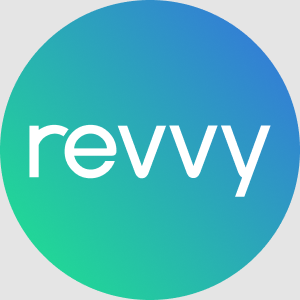HubSpot vs Salesforce: A Comparison
At Revvy, we spend our days designing, building, and optimizing revenue systems for growing teams.One of the most common questions we get from...
4 min read
 Revvy
Sep 10, 2025 8:33:33 AM
Revvy
Sep 10, 2025 8:33:33 AM
Table of Contents
“A modern CRM isn’t just a digital Rolodex. It’s your command center.” Getting the platform right is half the job; getting the implementation right is what turns it into real pipeline, accurate reporting, and a repeatable motion.
Below is a concise buyer’s guide for choosing the right CRM implementation provider- optimized for early-stage speed, resource constraints, and scale.
Look for a provider that’s deep, not wide.
Ask: “Show us 2-3 builds in our CRM that mirror our motion (PLG/SLG), with before/after screenshots and the automations used.”
Early-stage realities ≠ enterprise baggage.
Ask: “What would you ship in Week 1 vs. Week 4 to get us to first value fast?”
Beware generic templates. Your context matters.
Ask: “Show us your discovery workbook and the artifacts we’ll get (process maps, field dictionaries, naming conventions).”
Your CRM must unify the stack you run.
Ask: “How will you map enrichment, attribution, and product usage into a single source of truth without polluting data?”
If you can’t see it, you can’t scale it.
Ask: “Share a sample dashboard pack we’d get at go-live, and the exact metrics included.”
Automate the boring; highlight the critical.
Ask: “Which automations ship on Day 1 for prospecting vs. qualified deals? Show examples.”
Turn your CRM into a coach, not a filing cabinet.
Ask: “How will you operationalize personas/ICPs to change rep behavior and reporting-not just add fields?”
A powerful CRM reps won’t use is useless.
Ask: “Show us the first-week enablement plan and how you’ll drive weekly pipeline reviews from the CRM.”
You’ll evolve-your CRM should too.
Ask: “What’s your 90-day post-launch optimization plan, and how do you prioritize changes?”
No surprises, no bloat.
Ask: “Map a 4 to 6-week plan to first value, including acceptance criteria per milestone.”
As your guide warns: “Over engineering things early on (complex workflows before product-market fit)” is costly tech debt.
Choosing the right implementation provider is how you “build a structured, data-driven, and high-performing sales engine”- not just a contact database. Prioritize partners who deliver fast time-to-value, operational clarity, and adoption that sticks.
Bottom line: “Start with your CRM, then plug in channels, automations, and reporting around it. That’s how you build a sales engine that works.”
If you want a fast, founder-friendly path, Revvy implements the exact blueprint above, with pipelines, automations, dashboards, and role-based enablement baked in. We meet you where you are and scale what’s next.
At Revvy, we spend our days designing, building, and optimizing revenue systems for growing teams.One of the most common questions we get from...
At Revvy, we're excited to announce that we're officially an accredited Supered partner!
If you’re an early stage AI founder, you’ve probably realized that building a great product is only half the battle. To truly scale, you need a...